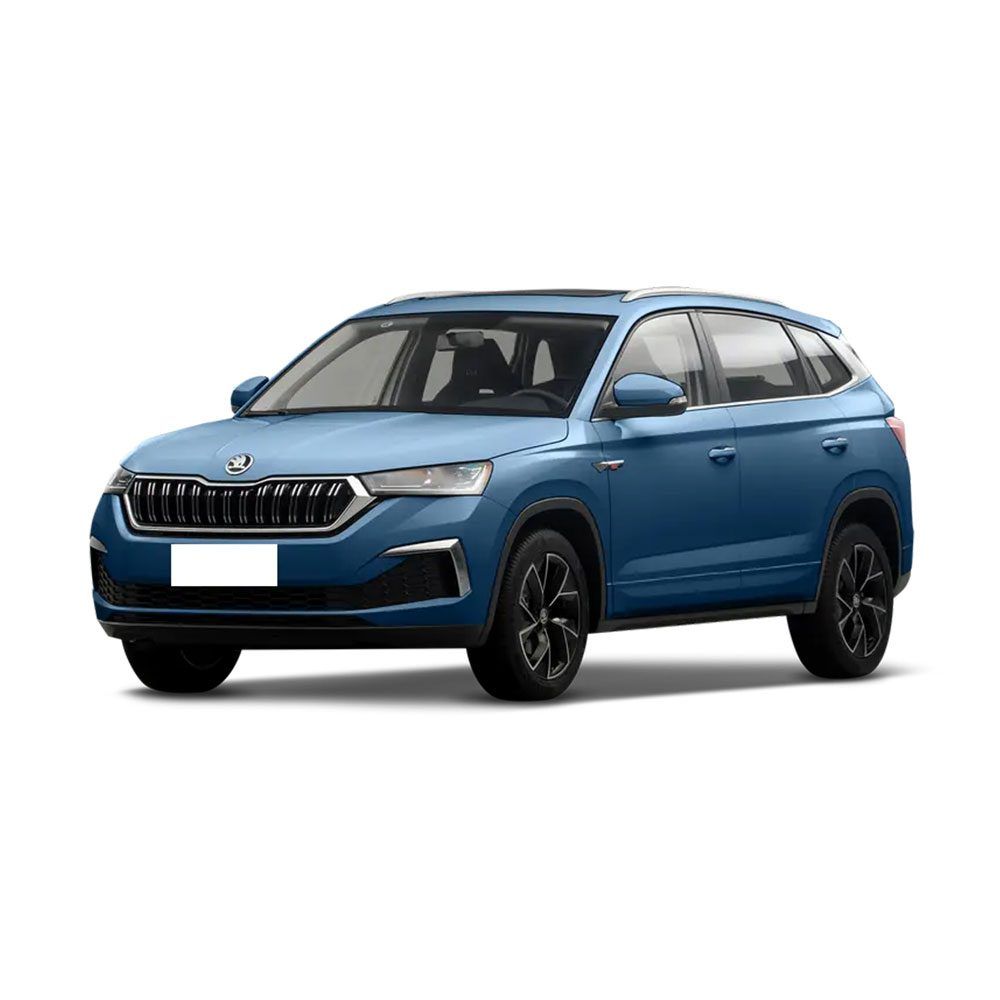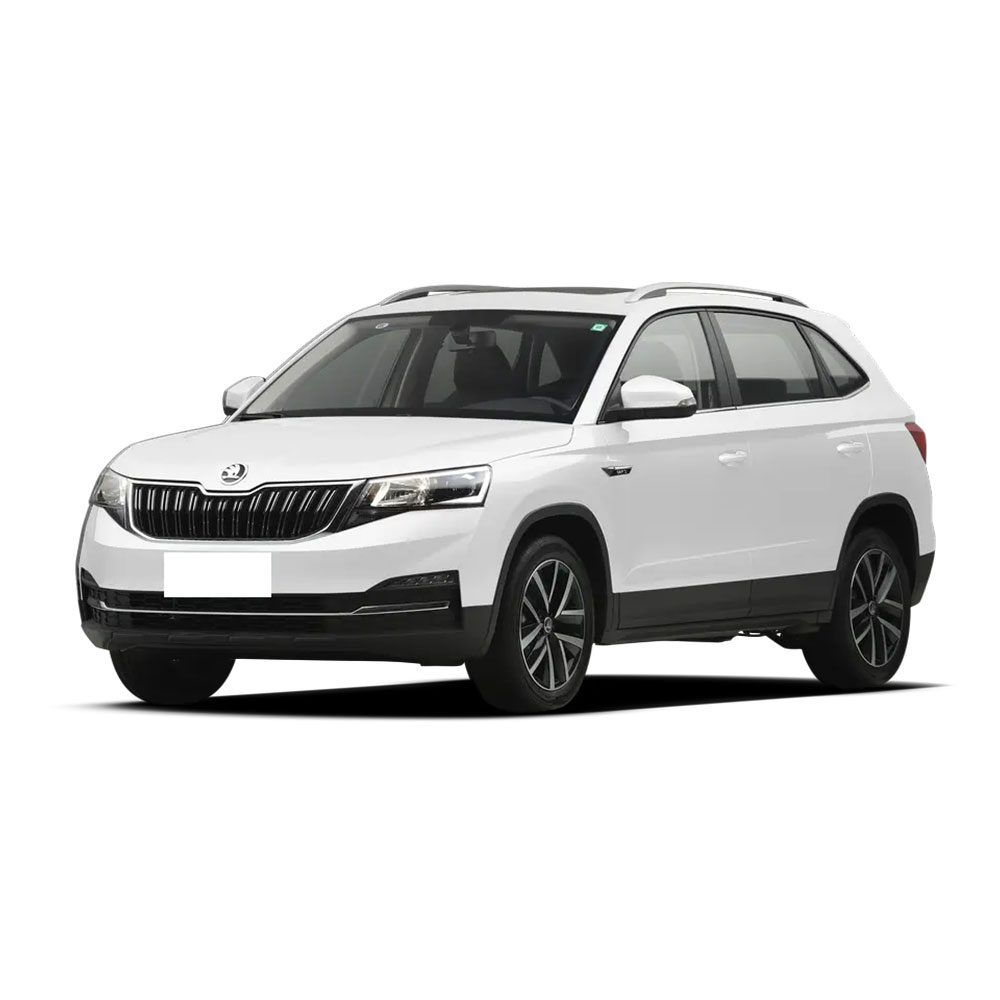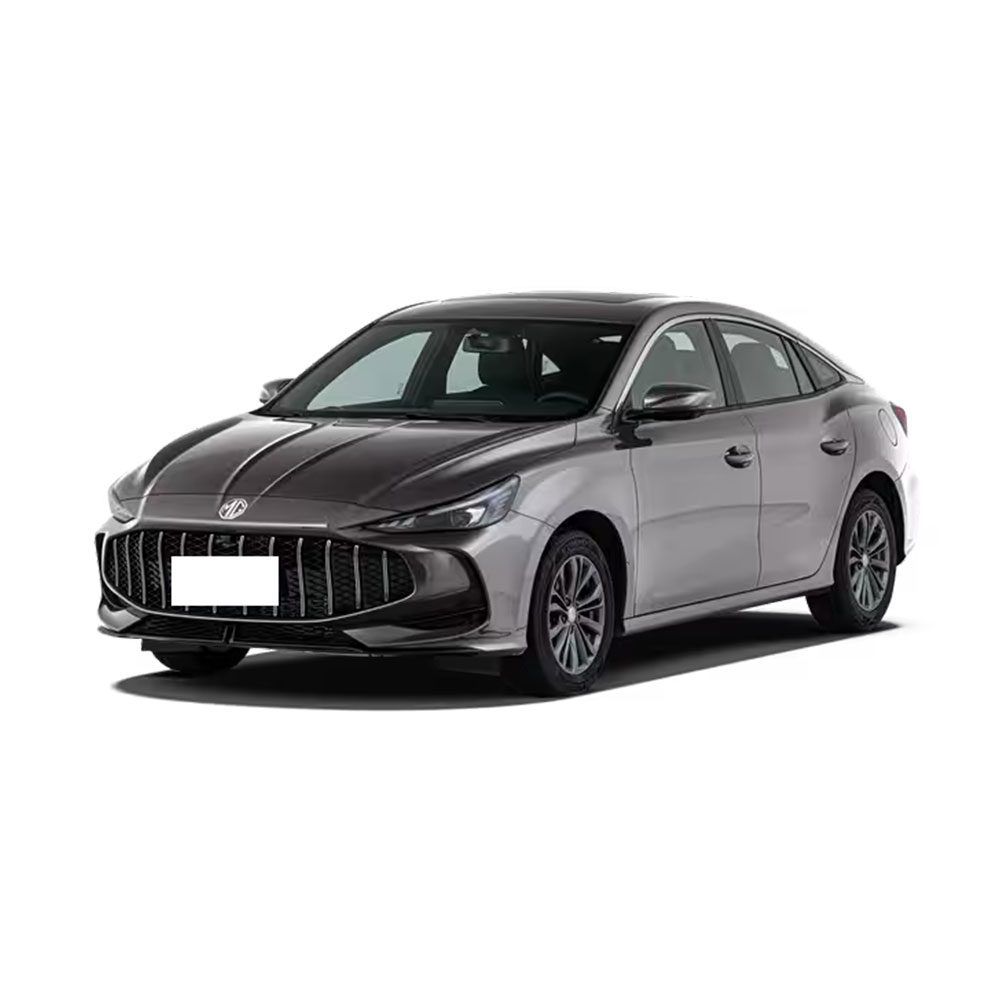Step-by-Step Guide to Chinese Car Shipping to South Africa
Step-by-Step Guide to Chinese Car Shipping to South Africa
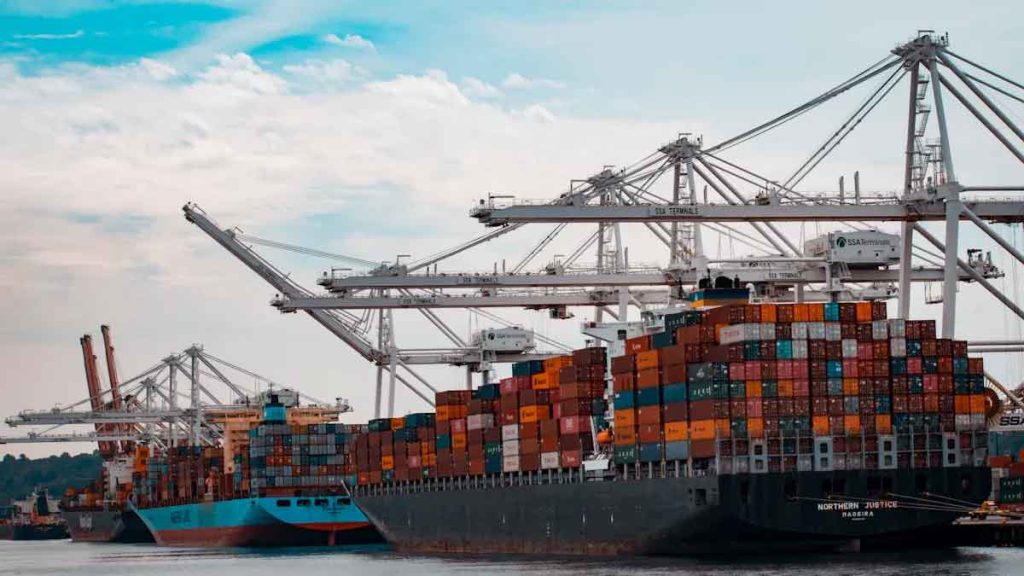
So, you want to know how Shipping Chinese Cars to South Africa works? You’re not alone. More and more people choose this route each year. Just look at the numbers:
| Year | Number of Chinese Vehicles Imported to South Africa | Market Share |
|---|---|---|
| 2019 | ~11,000 | Baseline |
| 2023 | >39,000 | 13.3% |
You can manage the process step by step. Pay attention to rules, gather the right documents, and pick the best shipping method. With a little guidance, you’ll avoid costly mistakes and get your car delivered smoothly.
Key Takeaways
- Look up import rules and get all needed permits before shipping. This helps you avoid delays or having your car sent back.
- Pick the best shipping method for your needs. RoRo is faster and costs less. Container shipping gives your car more protection.
- Get all your documents ready, like import permits, proof you own the car, and customs forms. This helps you pass customs without problems.
- Work with trusted shipping agents and experts. They help with paperwork, inspections, and tracking your car.
- Clean your car well and take out all personal items before shipping. This stops damage and keeps you from paying extra fees.
Import Regulations
Eligibility
You must check if you can import a car before shipping. South Africa has strict rules for bringing in foreign cars. You need an import permit from the Department of Trade, Industry and Competition (DTIC). You also need a Letter of Authority (LOA) from the National Regulator for Compulsory Specifications (NRCS). These papers prove you have permission and your car meets local rules. If you do not get these, your car might get stuck at customs or sent back.
Tip: Always check the latest rules with the DTIC and NRCS before you begin.
Vehicle Standards
South Africa wants all imported cars to be safe and good quality. Your Chinese car must follow national quality rules like WM/T 8-2022 and WM/T 9-2022. Every imported car gets checked by a third-party inspector. The inspection makes sure your car meets South African and international rules. You must give the inspection report with your other papers. These rules keep unsafe or bad cars off the road. Regulators also try to stop fake mileage or hidden damage. This helps keep you safe and builds trust in imported cars.
Taxes and Duties
You will pay different taxes and duties when importing a car from China. These costs can be high, so plan ahead. Here are the main charges:
| Tax/Duty Type | Rate/Details |
|---|---|
| Tariff on light vehicles | 25% |
| Tariff on original equipment components | 20% |
| Tariff on medium and heavy commercial vehicles | 20% ad valorem |
| Tariff on electric vehicle imports | 25% |
| VAT rate | 15% (applied on total dutiable value including customs value and duties) |
| Markup on customs value for goods outside BLNS Union (including China) | 10% |
| Additional possible costs | Excise duties, anti-dumping duties, environmental levies |
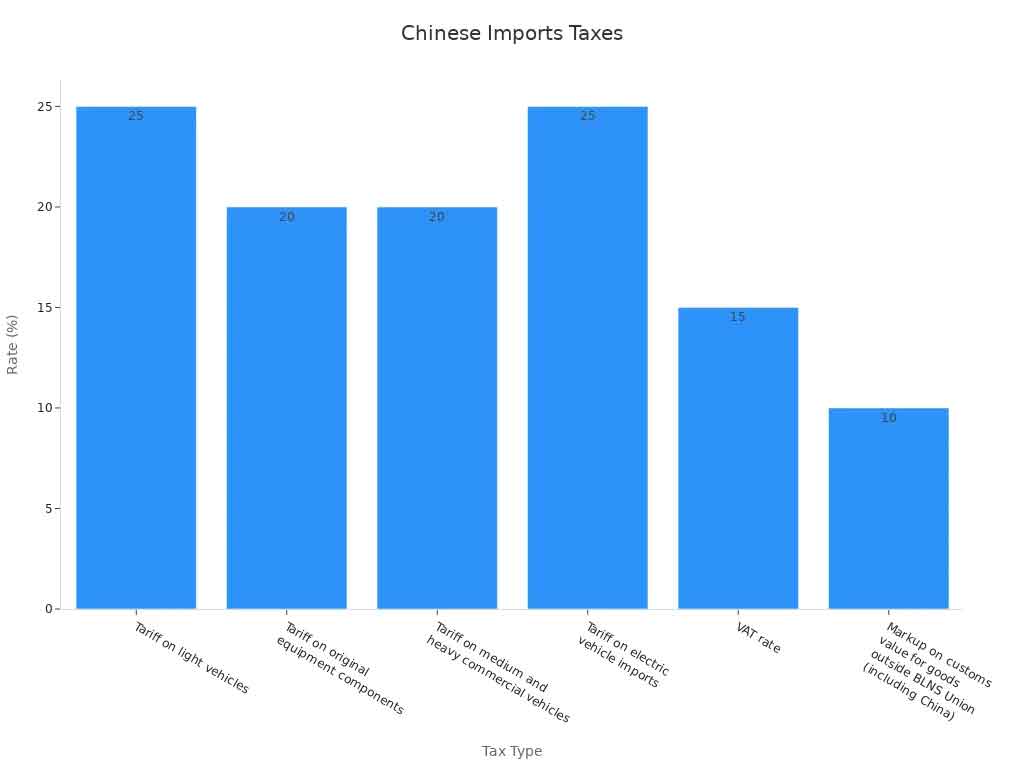
You pay a 25% tariff on most light vehicles and electric cars. There is also a 15% VAT and a 10% markup on the customs value. These fees do not include extra costs like excise or environmental levies. South Africa does not give special rates for Chinese cars. You must pay the full amount. Always add these costs to your budget so you do not get surprised.
Documentation
Getting your paperwork right is key when shipping a car from China to South Africa. If you miss a document or fill out a form wrong, your car could get stuck at customs. Let’s break down what you need.
Application Forms
You will need to fill out several forms before your car can leave China and enter South Africa. These forms help customs officials track your vehicle and make sure everything is legal. Here’s what you should prepare:
- Import Permit Application: This form comes from the Department of Trade, Industry and Competition (DTIC). It gives you permission to bring your car into South Africa.
- Customs Declaration: You must present your vehicle and all documents to customs at least 72 hours before export. Customs will check your paperwork and may keep the originals.
- Packing List: This list details everything packed with your car. It is mandatory for all exports.
- Bill of Lading: This document acts as proof of ownership and a contract for shipping.
- Special Agency Forms: Sometimes, you need extra forms, like environmental or safety certificates.
Tip: Always double-check which forms you need with your shipping agent. Rules can change, and missing paperwork causes delays.
Letter of Authority
A Letter of Authority (LoA) is a must-have. This letter lets someone else, like your shipping agent or a customs broker, act for you. The LoA allows them to pick up your car, arrange shipping, and handle customs. If you cannot be there in person, the LoA keeps things moving. It also helps if you need to change the consignee or update shipping details during transit. With an LoA, your agent can fix problems fast and avoid delays at customs.
Ownership Proof
You must prove you own the car. Bring the original ownership document, such as the Certificate of Title or Manufacturer’s Statement of Origin (MSO), plus two copies. If your car has a lien or third-party owner, get a letter from them allowing export. For foreign-titled vehicles, include an English translation if needed. Customs will check these documents and may keep the originals. Always keep copies for your records. This step protects you and helps customs clear your car quickly.
Choose and Inspect Car
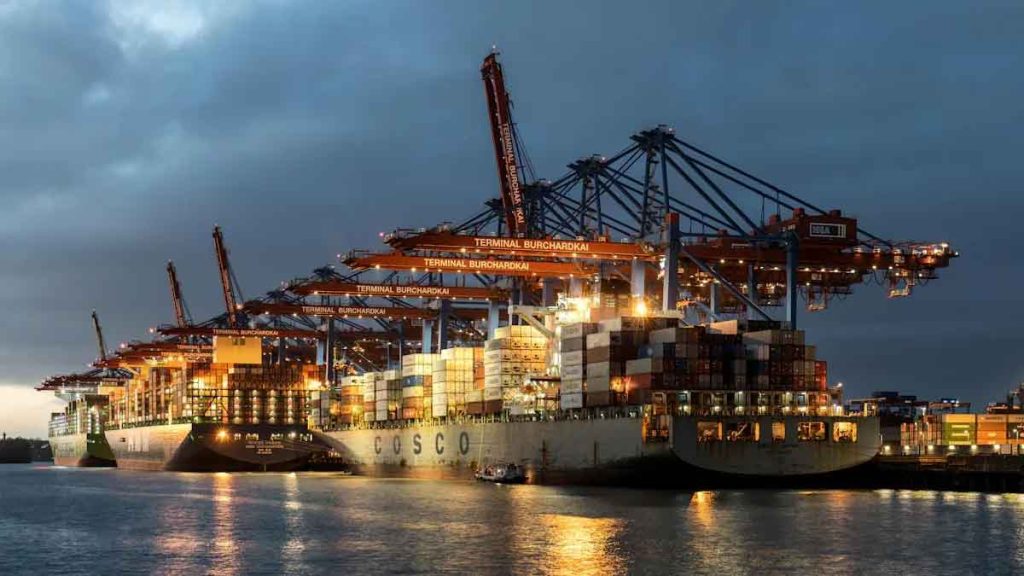
Select Vehicle
Picking the right car is a big step. You want a vehicle that fits your needs and gives you peace of mind. Many buyers look at different things before making a choice. Here are some key points to consider:
Price: Most people start with their budget. You want a car that offers good value for your money.
Fuel Efficiency: Saving on gas helps your wallet in the long run.
Comfort and Luxury: Features like soft seats, air conditioning, and a smooth ride can make every trip better.
Safety Features: Look for things like antilock braking systems (ABS), stability control, and airbags. These features help keep you safe, even if some buyers focus more on price or comfort.
Safety Ratings: Check the New Car Assessment Program (NCAP) star ratings. These ratings give you clear, trusted information about how safe a car is.
Ease of Use: Make sure you feel comfortable with the controls and driving experience.
Information Sources: Use both online reviews and advice from friends or family. Older drivers often check many sources before deciding.
Tip: Try to balance safety, comfort, and price. A car that scores well in all three areas is usually a smart pick.
Condition Check
After you choose your car, you need to check its condition. This step helps you avoid surprises later. A proper inspection makes sure your car meets safety and emissions rules. You can use a checklist or a digital app to keep track of everything.
Exterior: Look for dents, scratches, and check the tires.
Interior: Test the seats, dashboard, and controls.
Engine: Check oil, coolant, belts, and hoses.
Electrical: Make sure lights, signals, and gauges work.
Safety Equipment: Inspect airbags, brakes, and fire extinguishers.
A detailed inspection report will show if the car passes or needs repairs. If your car passes, you get a certificate that proves it meets the standards. Regular checks help you spot problems early and keep your car safe for the road.
Shipping Chinese Cars: Methods
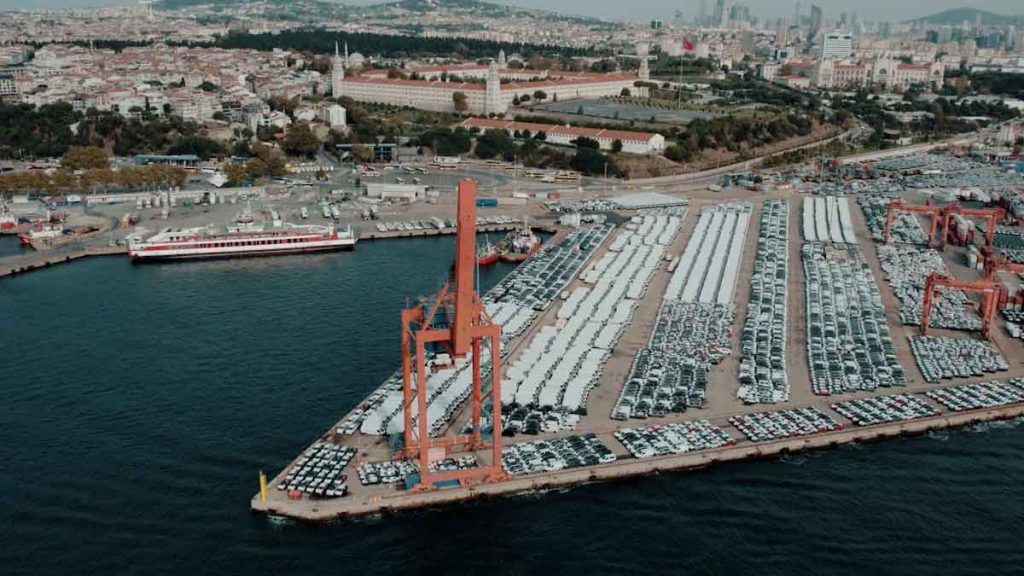
When you send a car from China to South Africa, you have two main choices. You can use RoRo shipping or container shipping. Each way has its own good points. Let’s look at both so you can pick what works for you.
RoRo Shipping
RoRo shipping is a common way to move cars by sea. You drive your car onto a special ship. When the ship gets there, you drive it off. This way is best for cars that can move on their own wheels.
Why pick RoRo?
- It is quick and easy.
- You do not pay for packing or unpacking.
- Loading and unloading are fast.
Here is a simple chart about RoRo:
| Aspect | RoRo Shipping |
|---|---|
| Cost | Lower, no packing fees, less handling |
| Transit Time | Faster, about 20-30 days from China to South Africa |
| Handling Complexity | Simple, drive-on/drive-off |
| Cargo Suitability | Best for cars, trucks, and heavy machinery |
| Risk of Damage | Some exposure to weather, but usually low |
| Port Flexibility | Needs special ports with ramps |
Tip: RoRo is great if you want to ship a normal car fast and save money.
Big shipping companies like Wallenius Wilhelmsen, NYK Line, and Höegh Autoliners use RoRo ships. They have many ships and focus on fast loading, safety, and helping customers.
Container Shipping
Container shipping means your car goes inside a locked metal box. You can put one car in a 20-foot container. You can fit two cars in a 40-foot container. This way keeps your car safe from weather and theft.
Why pick container shipping?
- Your car is safe inside a locked box.
- You can send other things with your car, like spare parts or personal items.
- You can use more ports and routes.
Here is a chart about container shipping:
| Aspect | Container Shipping |
|---|---|
| Cost | Higher, includes packing and handling fees |
| Transit Time | Slower, about 30-45 days from China to South Africa |
| Handling Complexity | More complex, uses cranes and forklifts |
| Cargo Suitability | Great for fragile or high-value vehicles |
| Risk of Damage | Very low, car is sealed and protected |
| Port Flexibility | Usable at many ports, supports intermodal transport |
Note: Container shipping is smart if you want more safety or need to send extra things.
RoRo vs. Container Shipping: Side-by-Side Comparison
Let’s compare both ways. Here is a table to help you see the differences:
| Comparison Aspect | RoRo Shipping | Container Shipping |
|---|---|---|
| Cost | Lower, no packing fees | Higher, includes packing and handling fees |
| Transit Time | Faster (20-30 days) | Slower (30-45 days) |
| Handling Complexity | Simple, drive-on/drive-off | More complex, uses cranes |
| Cargo Suitability | Best for cars and machinery | Best for fragile or high-value vehicles |
| Risk of Damage | Some exposure to elements | Very low, sealed and protected |
| Port Flexibility | Needs special RoRo ports | Usable at most container ports |
- RoRo shipping saves time and money for most cars.
- Container shipping costs more but keeps your car safer and lets you send more things.
- RoRo needs special ports with ramps. Containers work at most ports.
Best Ports in China and South Africa
You want your car to move easily from start to finish. Picking the right port helps a lot.
Top ports in China for car exports:
- Shanghai
- Tianjin
- Guangzhou
- Shenzhen
Best ports in South Africa for car imports:
- Durban (biggest and busiest, handles most car imports)
- Port Elizabeth
- Cape Town
Tip: Durban is the best choice for most car shipments to South Africa. It has new equipment and moves cars quickly.
Reputable Shipping Companies
You want a shipping company you can trust. Here are some of the best ones:
| Company | Fleet Size | Key Strengths |
|---|---|---|
| Wallenius Wilhelmsen | 130+ | Global reach, fast loading, strong customer service |
| NYK Line | 120+ | Heavy machinery expertise, reliable schedules |
| Höegh Autoliners | N/A | Specialized RoRo services, global operations |
These companies have lots of experience and offer both RoRo and container shipping. They help with paperwork, insurance, and tracking your car.
Note: Always ask your shipping agent which company and port are best for you. This helps you avoid problems and keeps your car safe.
With the right shipping method, port, and company, you can move your Chinese car to South Africa without worry.
Shipping Costs
Cost Estimate
When you start Shipping Chinese Cars to South Africa, you want to know how much it will cost. The total price depends on many things. You pay for the car, shipping, insurance, and customs fees. Each part adds up. Here’s a simple table to show you the main costs you might see:
| Component | How It’s Calculated | Example Amount (Naira) |
|---|---|---|
| FOB (Freight on Board) | Car value + extra charges | 1,804,000 |
| Freight | Shipping cost | Included in CIF |
| CIF (Cost, Insurance, Freight) | Car + insurance + shipping | 2,043,768 |
| Import Duty | 10% of CIF | 204,376.8 |
| Surcharge | 7% of Import Duty | 14,306.37 |
| CISS | 1% of FOB | 18,040 |
| ETLS | 0.5% of CIF | 10,218.84 |
| VAT | 7.5% of total charges | 171,803.25 |
| Total Customs Charges | All duties and taxes added together | 417,105.26 |
| Total Landed Cost | CIF + customs charges | 2,460,873.26 |
You can see that Shipping Chinese Cars involves more than just the price of the car. Each step has its own fee. If you want a quick look at how these costs stack up, check out this chart:
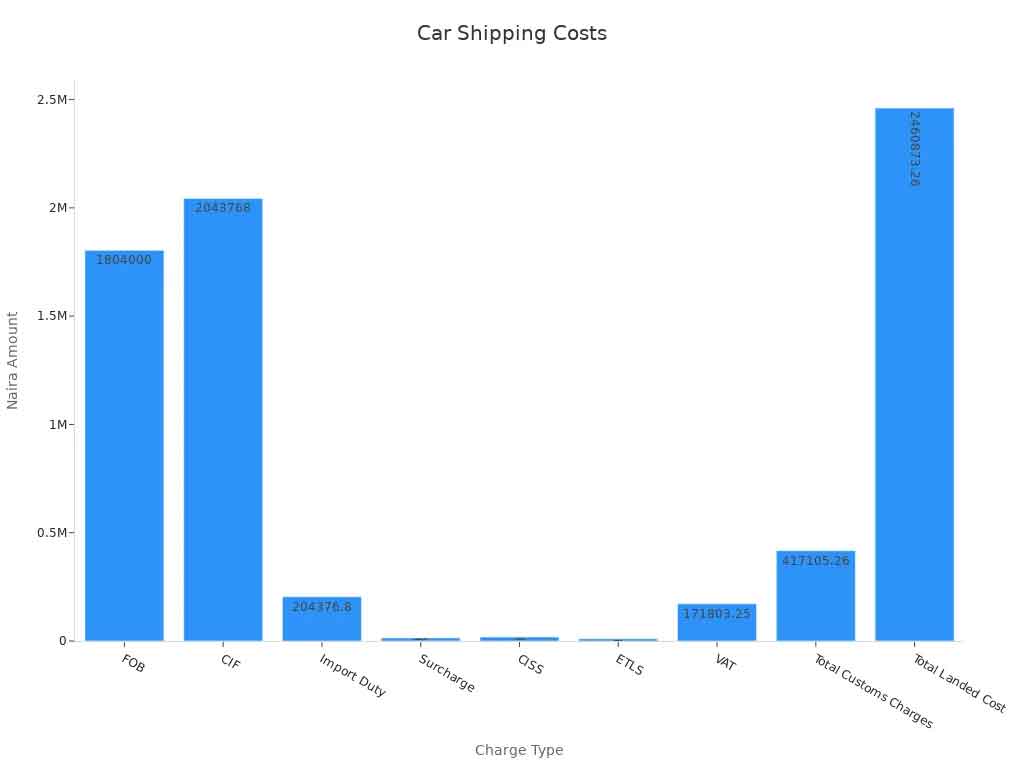
Duties and VAT
When you import a car, you pay duties and VAT. These are government taxes. You pay import duty based on the value of your car and shipping. For most Shipping Chinese Cars, the import duty is about 10% of the CIF value. You also pay a surcharge, CISS, and ETLS. After that, you pay VAT. In South Africa, VAT is 15%. Customs adds up all the charges before they calculate VAT.
Tip: Always ask your shipping agent for a full breakdown. This helps you avoid surprises and plan your budget.
Shipping Chinese Cars can seem expensive, but knowing each cost helps you make smart choices. You can compare prices, pick the best shipping method, and avoid hidden fees.
Shipping Agent
Choose Agent
Choosing the right shipping agent is very important when Shipping Chinese Cars to South Africa. You need someone who understands the process and can help you at every step. Not all agents give the same service, so you should compare them. Use clear points to make your choice. Here is a table to help you:
| Criteria | What to Look For |
|---|---|
| Location | Close to your supplier and main ports |
| Employee Capabilities | Skilled staff who care about quality |
| Cost Structure | Clear pricing, no hidden fees |
| Infrastructure & Assets | Modern equipment and good support facilities |
| Management Capability | Experienced managers who plan well |
| Financial Stability | Strong financial history and low debt |
| IT Capability | Good online systems for tracking and updates |
| Quality Capabilities | Reliable service and ability to meet your needs |
| Service-related Factors | Includes insurance, tracking, and delivery guarantees |
Some shipping platforms, like Easyship, help you save money. They offer discounts and show all fees clearly. You also get tracking, insurance, and delivery promises. This gives you good prices and peace of mind.
Tip: Always ask about tracking, insurance, and how they fix problems before you pick an agent.
Role in Process
A shipping agent does more than just book a ship. They help you follow all the rules and keep your car safe. Here is what a good agent does:
- Checks all laws and rules for China and South Africa.
- Looks for risks, like missing papers or customs problems.
- Keeps records and protects your data.
- Trains staff and tells you about new rules.
- Tracks your shipment and tells you about any problems fast.
A good shipping agent helps you avoid fines and delays. They keep your car moving and protect your name. Many agents use special tools to track shipments and make sure things are on time. When you work with a trusted agent, you can relax and get your car ready.
Prepare Vehicle
Clean Car
Before you ship your car, give it a good clean inside and out. This step is more important than you might think. When you wash the outside, you spot scratches, dents, or paint chips that might have gone unnoticed. You can take clear photos and write notes about any marks. This helps you prove the car’s condition if you need to file an insurance claim later.
A clean car also makes inspections at the port much smoother. Shipping companies and customs want to see a tidy vehicle. Dirt and debris can hide damage or even cause problems during transport. Cleaning the engine bay helps you find leaks or worn parts early. Fixing small issues now can save you from bigger repairs down the road.
Tip: Clean your car about 24 hours before pickup. This gives you time to dry it off and check for any last-minute issues.
Here’s what you should focus on:
- Wash the exterior, including wheels and undercarriage.
- Vacuum the seats, mats, and trunk.
- Wipe down the dashboard and door panels.
- Clean the engine area to spot leaks or loose parts.
A spotless car not only looks better but also helps you avoid delays and extra fees at the port.
Remove Personal Items
Take out all your personal belongings before shipping your car. This is not just a suggestion—it’s a rule for most shipping companies. Items left inside can shift during transit, causing damage or even getting lost. Removing everything keeps your car safe and helps you avoid extra charges.
Here’s a quick checklist:
Remove bags, electronics, and paperwork.
Take out loose change, sunglasses, and small accessories.
Check under seats and in the glove box.
Remove any removable accessories or custom add-ons.
Shipping companies and customs require empty cars for safety and legal reasons. By clearing out your car, you lower the risk of theft and make inspections faster. Studies show that following these steps can save you up to $300 in surprise fees and help your car arrive on time—almost every time.
Book Shipping
Delivery to Port
You have picked your car and chosen your shipping method. Now, it is time to get your car to the port. This step is important for Shipping Chinese Cars because it sets the stage for a smooth journey. You want everything to go as planned, so keep these points in mind:
- Port congestion can slow things down. Try to avoid peak seasons and pick ports with modern equipment. Ports like Shanghai and Durban handle cars quickly.
- Customs rules are different in every country. Work with a shipping agent who knows the process. They help you avoid bottlenecks and keep your car moving.
- Weather can change your plans. Hurricanes or heavy rain may delay ships. Check the forecast and plan for possible changes.
- The shipping company’s efficiency matters. Choose carriers with well-maintained ships and a good track record. This reduces the risk of delays.
- Technology helps a lot. Real-time tracking lets you see where your car is at any time. Some companies use smart tools to predict and fix problems before they happen.
Tip: Ask your agent about the best time to ship and which port is least crowded. This can save you days or even weeks.
Insurance
You want your car to arrive safely, but accidents can happen. Insurance protects you from big losses if something goes wrong during Shipping Chinese Cars. There are different types of insurance, and each one covers a special risk. Here is a table to help you understand what is available and why it matters:
| Insurance Type | Why It Matters |
|---|---|
| Life Insurance | Pays out if a wage earner dies. Many families depend on two incomes, so this helps cover losses. |
| Health Insurance | Covers medical bills. Most people have it, but costs can be high without it. |
| Long-term Disability | Protects your income if you cannot work. One in four workers face this risk before retirement. |
| Auto Insurance | Covers damage or loss to your car. Traffic accidents are common, so this is a must-have. |
Auto insurance is the most important for your shipment. It covers your car if it gets damaged or lost at sea. Always ask your shipping agent what insurance options they offer. Make sure you understand what is covered and what is not.
Note: Some ports or shipping companies require proof of insurance before they accept your car. Double-check this before you book.
Customs Clearance
China Export
Getting your car out of China starts with the right paperwork. You need to make sure every document is ready before your car leaves the port. If you miss something, your car could get stuck for days or even weeks. Here’s what you need for a smooth export:
- Commercial Invoice: Shows the car’s value, details, and who is buying it.
- Packing List: Lists what is inside the shipment, including weight and size.
- Bill of Lading: Proves the car is on the ship and is your contract with the shipping company.
- Certificate of Origin: Tells customs where the car was made.
- Export License: Needed for certain cars or if the government asks for it.
Make sure all documents are accurate and match each other. Even a small mistake can cause big delays.
South Africa Import
When your car arrives in South Africa, customs officers check everything again. They want to see that your car meets all rules and that you have paid the right taxes. Here’s what you need to clear customs fast:
- Import Permit: You must get this from ITAC after you register with SARS.
- Letter of Authority: Proves you can import the car.
- Commercial Invoice and Bill of Lading: These must match what you gave in China.
- Packing List and Certificate of Origin: Customs uses these to check the car’s details.
- Proof of Duty and VAT Payment: You must pay all taxes before you get your car.
| Document | Purpose | Where to Get It |
|---|---|---|
| Import Permit | Legal right to import | ITAC (after SARS reg.) |
| Letter of Authority | Permission for customs and collection | NRCS |
| Commercial Invoice | Value and sale details | Seller |
| Bill of Lading | Shipping contract and proof | Shipping company |
| Certificate of Origin | Confirms where car was made | Manufacturer |
Tip: Double-check every document before your car ships. Customs delays often happen because of missing or wrong paperwork.
If you want to avoid delays when Shipping Chinese Cars, always keep your documents organized and ready. Customs officers work faster when everything is clear and correct. If you follow these steps, your car will be on the road in South Africa sooner than you think!
Delivery Options
When your car arrives in South Africa, you get to choose how you want it delivered. You can pick door-to-door service or go with port pickup. Each option has its own perks. Let’s see which one fits your needs best.
Door-to-Door
Door-to-door delivery means your car comes right to your home or business. You do not have to worry about picking it up at the port. The shipping company handles everything, from customs to final delivery. This method saves you time and effort.
Tip: Door-to-door delivery is perfect if you want a stress-free experience. You just wait for your car to arrive at your doorstep.
People all over the world love this option. Take a look at how popular home delivery is in different countries:
| Country | Preferred Delivery Method | Preference Percentage | Notes |
|---|---|---|---|
| Germany | Home/Doorstep Delivery | ~80% | Most people want their car or package delivered to them |
| Netherlands | Home Delivery | 71% | Drops to 7% if there’s an extra fee |
| Australia | Postal Home Delivery | Highest preference | People like home delivery more than lockers or drones |
| Italy | Parcel Lockers | High propensity | Only if lockers are close and easy to use |
You can see that most people want their car or package delivered right to their door. Door-to-door service is also fast and reliable. The company tracks your car and handles customs, so you do not have to. You get peace of mind and more time for other things.
Port Pickup
Port pickup means you go to the port to collect your car. This option can save you some money, especially if you live near the port or want to handle things yourself. You take care of customs clearance and arrange your own transport from the port to your home.
Here’s when port pickup might work for you:
- You live close to the port.
- You want to save on delivery fees.
- You like to handle paperwork and customs yourself.
Note: If you choose port pickup, bring all your documents and check the port’s opening hours. Some ports can be busy, so plan ahead.
Both options work well. Pick the one that matches your schedule, budget, and comfort level.
After Arrival
Final Inspection
Your car has finally arrived in South Africa! Before you drive away, you need to do a final inspection. This step helps you spot any damage that may have happened during shipping. Walk around your car and check the body for dents, scratches, or broken parts. Open the doors and look inside. Make sure everything is clean and nothing is missing. Test the lights, horn, and brakes. If you see any problems, take photos and tell your shipping agent right away.
Here’s a quick checklist to help you:
- Check the exterior for new dents or scratches.
- Look inside for missing items or damage.
- Test all lights and signals.
- Start the engine and listen for strange sounds.
- Make sure the tires look good.
Tip: Take clear photos of your car before and after shipping. This makes it easier to prove if something changed during transport.
Registration
Now it’s time to register your car in South Africa. This step lets you drive legally on the road. You need to visit your local licensing office with all your documents. Bring your import permit, proof of payment for duties and VAT, the bill of lading, and your ID. The staff will check your papers and enter your car into the system.
Many cities use smart systems to speed up registration. These systems help you finish faster and save money. Logistics data shows that using route optimization and better planning can improve load factor by over 50%. Fuel use drops by about 12%, and total delivery costs go down by more than 12%. Here’s a table showing these improvements:
| KPI Metric | Improvement (%) | What It Means |
|---|---|---|
| Load Factor | 50.12% | More cars delivered per trip |
| Fuel Consumption | 12.12% | Less fuel used for each delivery |
| Total Costs per Parcel | 12.22% | Lower average cost for each car delivered |
Note: Registering your car quickly means you can start driving sooner and avoid extra storage fees at the port.
Once you finish registration, you get your license plates and can enjoy your new car on South African roads!
Tips for Success
Avoid Pitfalls
Shipping a car from China to South Africa can feel tricky, but you can dodge most problems with a little planning. Here are some common mistakes and how you can avoid them:
- Missing Documents: Always double-check your paperwork. Missing a single form can delay your car for weeks.
- Ignoring Import Rules: South Africa has strict rules. Make sure your car meets all standards before you ship.
- Underestimating Costs: Shipping involves more than just the car price. Remember to include taxes, duties, and delivery fees in your budget.
- Choosing the Wrong Shipping Method: Pick the method that fits your needs. RoRo is fast and affordable. Container shipping gives extra protection.
- Skipping Inspections: Inspect your car before and after shipping. Take photos and keep records.
Tip: Make a checklist for every step. This helps you stay organized and avoid surprises.
Work with Professionals
You do not have to handle everything alone. Working with experts makes the process much easier. Here’s why you should team up with professionals:
| Professional | How They Help You |
|---|---|
| Shipping Agent | Handles paperwork, books shipping, tracks your car |
| Customs Broker | Guides you through customs clearance |
| Inspection Service | Checks your car’s condition and standards |
- Ask Questions: Good agents answer your questions and explain each step.
- Check Reviews: Look for companies with strong reputations and happy customers.
- Stay in Touch: Keep contact with your agent. Updates help you know where your car is at all times.
Note: Professionals save you time, money, and stress. You get peace of mind knowing your car is in good hands.
You now have a clear path for shipping a Chinese car to South Africa. Careful planning, attention to detail, and working with trusted partners make the process smooth. Use this guide as your checklist:
- Gather all documents
- Choose the right shipping method
- Work with professionals
Remember: Every step you take brings you closer to driving your dream car on South African roads. Enjoy the journey and the rewards that come with it!
FAQ
How long does it take to ship a car from China to South Africa?
You can expect your car to arrive in about 20 to 45 days. RoRo shipping is faster, while container shipping takes a bit longer. Weather and port schedules can also affect the timeline.
What documents do I need for customs clearance?
You need your import permit, Letter of Authority, bill of lading, commercial invoice, and proof of payment for duties and VAT.
Tip: Keep all your documents in one folder so you can find them quickly.
Can I ship personal items inside my car?
No, you should not leave personal items in your car. Shipping companies and customs require empty vehicles for safety and legal reasons.
Remove all bags, electronics, and paperwork before shipping.
Which ports are best for shipping cars to South Africa?
| China Ports | South Africa Ports |
|---|---|
| Shanghai | Durban |
| Tianjin | Port Elizabeth |
| Guangzhou | Cape Town |
Durban is the top choice for most car imports.
